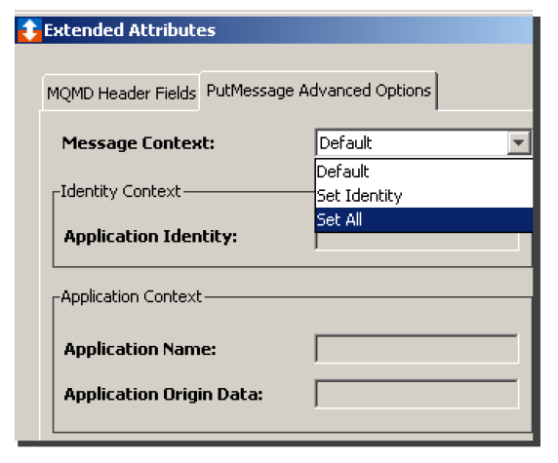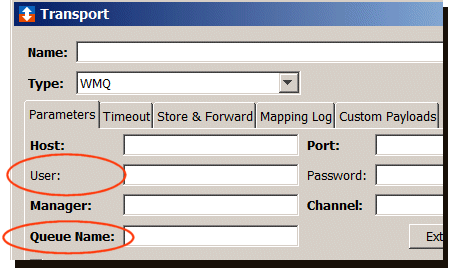Context information is used for associating messages with the user who generated them, and for identifying the application that generated the message. Such information is useful for security, accounting, auditing, and problem determination.
You can use the PutMessage Advanced
Options tab to set additional context information
for the receiving application to use.
The following describes message context values available on
the PutMessage Advanced Options tab.
| Parameter | Description |
| Message Context | You can accept the default message
content or specify other content. Options are: Default — Take the default context information supplied by the queue manager. Set Identity — Makes the Identity Context section available. Set All — Make both the Identity Context and Application Context sections available. For more information, see the sectionUsing Set Identity or Set All on the PutMessage Advanced Options tab. |
| Identity Context | section identifies the user of the application that first put the message on a queue. |
| Application Identity | The type of application that put the message (for example, a CICS transaction). |
| Application
Context
|
section provides the application that put the message on the queue on which the message is currently stored. |
| Application Name | The name of the application that put the message (for example, the name of a job or transaction). |
| Application Origin Data | Any extra information that an application wants to include about the origin of the message. For example, it could be set by suitably authorized applications to indicate whether the identity data is trusted. Origin context information is usually supplied by the queue manager. |
Using Set Identity or Set All on the PutMessage Advanced Options tab
If you have specified Set Identity or Set All from the Message
Context drop-down list on the PutMessage
Advanced Options tab and have also requested a
COD reporting option from the MQMD
Header Fields tab, a user ID must be specified on
the Transport window.
In addition, this user must have access to:
- The queue specified in the Queue Name parameter on the Create Transport window.
- The queue specified in the Reply to Queue parameter on the MQMD Header Field tab.
If the user does not have access to the queue specified in the Queue Name parameter, the transport will not validate. If the user does not have access to the queue specified in the Reply to Queue parameter, the COD will not be delivered but will be added to the queue manager's dead letter (undeliverable message) queue, if one exists.